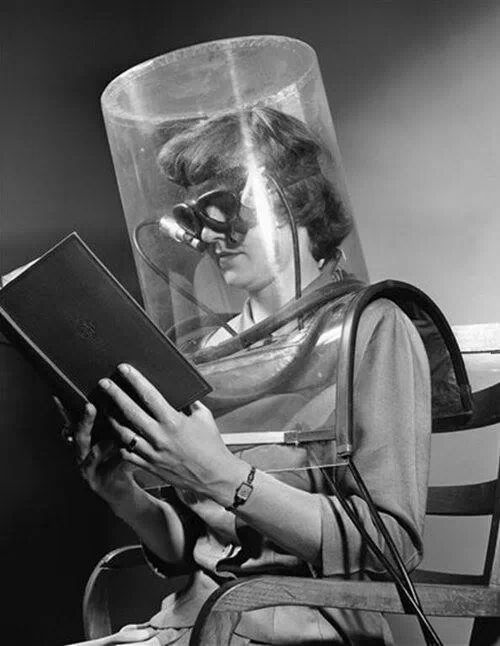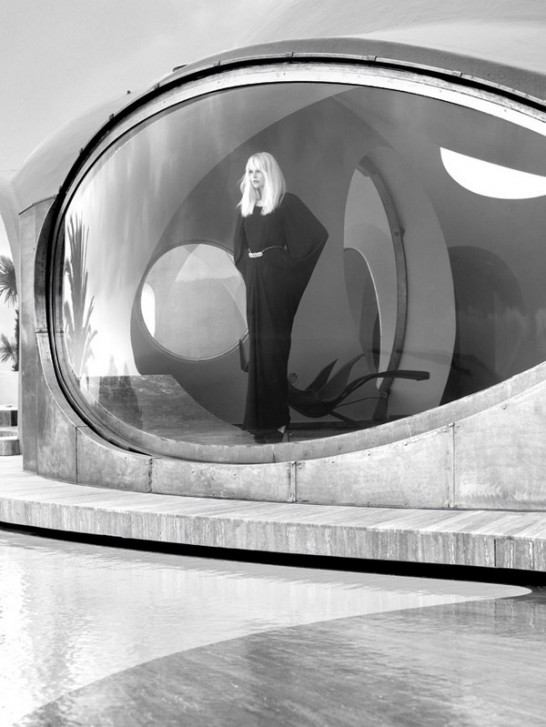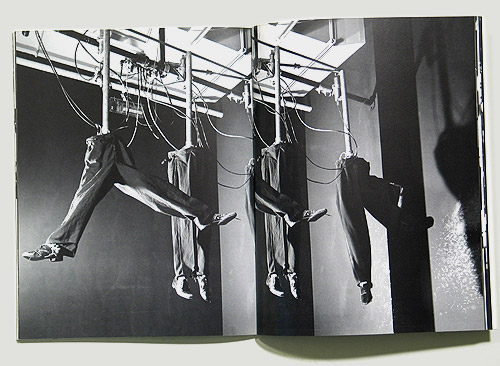Astronauts were always, to some degree, considered expendable modern gladiators. Astronautical engineer Robert Zubrin lays out in plain terms the high cost of taking extraordinary measures to safeguard their lives.
You are currently browsing the archive for the Science/Tech category.
Tags: Robert Zubri
John Sculley, the man who fired Jobs and oversaw the development of Newton, is interviewed by the Guardian about cloud computing, especially about health care in the age of the cloud. But he took a minute to explain why he thought the Newton digital assistant failed:
“Speaking of connected devices, might one of the flaws in the Newton have been it lack of connectivity – something that now exists through mobile broadband? Sculley has, of course, had a long time to reflect on this.
‘Well, I think the idea [of Newton] was right, it was just 20 years ahead of its time. So actually, a lot of people were able to see where the industry’s going, the hardest part is to figure out when it’s going to happen.
‘In the case of the PDA, the idea was right – that the content and communication and computing were going to converge – but I think we greatly underestimated that we needed broadband, that we need far more powerful devices, that we needed something a lot more powerful in the background which we now know as ‘cloud’ to be able to handle the tremendous amount of data, and connecting people up through social networking. So it was a good idea, but it was just several decades too early.'”
••••••••••
The instructional video that came with the Newton:
Tags: John Sculley
From 1981’s My Dinner with Andre, a debate about technology, the comfort and numbness it brings, and how it subtly changes who we are:
Wally:
Last summer Debbie and I were given an electric blanket. I can tell you it is just such a marvelous advance over our old way of life. And it’s just great. But it is quite different from not having an electric blanket. And I sometimes sort of wonder, What is it doing to me? And I mean, I sort of feel that I’m not sleeping quite in the same way.
Andre:
No, you wouldn’t be.
Wally:
And I mean, uh…my dreams are sort of different. And I feel a little bit different when I get up in the morning.
Andre:
I wouldn’t put an electric blanket on for anything. First, I might be worried that I’d get electrocuted. No, I don’t trust technology. But I mean the main thing Wally is that I think that that kind of comfort just separates you from reality in a very direct way.
Wally:
You mean…
Andre:
I mean if you don’t have that electric blanket, and you’re apartment is cold, and you need to put on another blanket or go into the closet and pile up coats on top of the blanket you have, well then you know it’s cold, and that sets up a link of things. You have compassion for the person–well, is the person next to you cold? Are there other people in the world cold? What a cold night! I like the cold, my god, I never realized. I don’t want a blanket. It’s fun being cold. I can snuggle up against you even more because it’s cold–all sorts of things occur to you. Turn on that electric blanket and it’s like taking a tranquilizer, it’s like being lobotomized by watching television. I think you enter the dream world again. What does it do to us, Wally, living in an environment where something as massive as the seasons or winter or cold don’t in any way effect us? I mean, we’re animals, after all. I mean, what does that mean? I think that means that instead of living under the sun and the moon and the sky and the stars, we’re living in a fantasy world of our own making.”•
From “Secret Soviet Cities,” a BLDG BLOG post about covert Cold War burgs and the outré medical experiments that were conducted within their invisible walls:
“Just last week, Nature looked at Soviet-era experiments in these closed cities, where ‘nearly 250,000 animals were systematically irradiated’ as part of a larger medical effort ‘to understand how radiation damages tissues and causes diseases such as cancer.’
In an article that is otherwise more medical than it is urban or architectural, we nonetheless read of a mission to the formerly closed city of Ozersk in order to rescue this medical evidence from the urban ruins: ‘After a long flight, a three-hour drive and a lengthy security clearance, a small group of ageing scientists led the delegation to an abandoned house with a gaping roof and broken windows. Glass slides and laboratory notebooks lay strewn on the floors of some offices. But other, heated rooms held wooden cases stacked with slides and wax blocks in plastic bags.’ These slides and wax blocks ‘provide a resource that could not be recreated today,’ Nature suggests, ‘for both funding and ethical reasons.’
Perhaps it goes without saying, but the idea of medical researchers helicoptering into the ruins of a formerly secret city in order to locate medical samples of fatally irradiated mutant animals is a pretty incredible premise for a future film.”
In 1988, his dreams dashed and reputation destroyed, John DeLorean was living in Manhattan, now a born-again Christian, still believing he would get another chance. He granted a rare interview to a local TV station from his old stomping grounds in Detroit. Funny to see him strolling through Central Park.
More DeLorean posts:
Tags: John DeLorean
Urban planner Rahul Mehrotra, in a New York Times conversation with Neha Thirani, talking about gated communities, a dark side of the development in India that’s being fueled by global capital:
“At the micro level our biggest concern is going to be that of the immense polarization that is occurring in our built environment. The between what we call slums or the informal city and large-scale infrastructure and global architecture is going to set up enormous social tensions in our society. Global capital is landing in our cities and bullying its way physically to create a presence and a polarization which will be hard to reverse and resolve as we go on unless we address this issue very quickly.
What results from that polarization are conditions like gated communities, whether they are vertical gated communities or communities at the edge of the city. Because gated communities usually have their own water supply, sewage disposition, they are actually parasitic on the city because they don’t give to the city. They exclude the city but engage with the city on their own terms, and so it’s not a two way kind of exchange.”
Tags: Neha Thirani, Rahul Mehrotra
The opening of a 1994 New Scientist interview with well-compensated prognosticator Alvin Toffler, still best known for his incredibly popular 1970 book, Future Shock:
“What led you to write Future Shock? While covering Congress, it occurred to us that big technological and social changes were occurring in the United States, but that the political system seemed totally blind to their existence. Between 1955 and 1960, the birth control pill was introduced, television became universalized [sic], commercial jet travel came into being and a whole raft of other technological events occurred. Having spent several years watching the political process, we came away feeling that 99 per cent of what politicians do is keep systems running that were laid in place by previous generations of politicians.
Our ideas came together in 1965 in an article called ‘The future as a way of life,’ which argued that change was going to accelerate and that the speed of change could induce disorientation in lots of people. We coined the phrase ‘future shock’ as an analogy to the concept of culture shock. With future shock you stay in one place but your own culture changes so rapidly that it has the same disorienting effect as going to another culture.
Were you surprised by the reaction to the book? I think that it touched a nerve. Remember we were coming out of the Sixties, countries were being torn apart, change was almost out of control for a period. It touched a nerve, it gave a language, it introduced a metaphor that people could use to describe their own experience.
Looking back to 1970 when the book came out, how would you have done it differently? The great weakness was the book wasn’t radical enough, although everybody said it was a very radical book. The reason for that is that we introduced the concept of the general crisis of industrialism. Marx had talked about the general crisis of capitalism and the argument of the left was always that capitalism would collapse upon itself and socialism would triumph. We argued that both capitalism and socialism would collapse eventually because both were the offspring of industrial civilization, and that we were on the edge of a new way of life, a new civilization. Had we understood more deeply the consequences of that idea we would not have accepted as naively as we did the forecasts of the economists. If you think that economists are arrogant now, in the Sixties they were really riding high. They claimed we would never have another recession, and the reason was that we understand how the economy works, and ‘all we have to do is fine-tune it” as one economist told us. We were young and naive and we bought that notion. We should have anticipated that the revolution we were talking about would have hit the economy in a much deeper way.”
See also:
- The film version of Future Shock, narrated by Orson Welles.
Tags: Alvin Toffler
A thesis statement from the recent Global Future 2045 Congress in Moscow.
Humans may have been aided by a heretofore unnamed ally in outlasting Neanderthals–dogs. From Megan Garber at the Atlantic:
“What happened? What went so wrong for the Neanderthals — and what went so right for us humans?
The cause, some theories go, may have been environmental, with Neanderthals’ decline a byproduct of — yikes — climate change. It may have been social as humans developed the ability to cooperate and avail themselves of the evolutionary benefits of social cohesion. It may have been technological, with humans simply developing more advanced tools and hunting weapons that allowed them to snare food while their less-skilled counterparts starved away.
The Cambridge researchers Paul Mellars and Jennifer French have another theory, though. In a paper in the journal Science, they concluded that ‘numerical supremacy alone may have been a critical factor’ in human dominance — with humans simply crowding out the Neanderthals. Now, with an analysis in American Scientist, the anthropologist Pat Shipman is building on their work. After analyzing the Mellars and French paper and comparing it with the extant literature, Shipman has come to an intriguing conclusion: that humans’ comparative evolutionary fitness owes itself to the domestication of dogs.
Yep. Man’s best friend, Shipman suggests, might also be humanity’s best friend. Dogs might have been the technology that allowed early humans to flourish.”
Tags: Megan Garber, Pat Shipman
Marshall McLuhan, in 1977, before electricity truly started to flow, recognizing early how new media would fray secrecy and expose information. But what if we know about everything and we still don’t do anything? What then?
Tags: Marshall McLuhan
From a great and epic post by Matt Honan at Gizmodo, which looks at how Yahoo made a wise buy, purchasing an amazing thing, Flickr, and fucked it up beyond belief:
“This is the story of a wonderful idea. Something that had never been done before, a moment of change that shaped the Internet we know today. This is the story of Flickr. And how Yahoo bought it and murdered it and screwed itself out of relevance along the way.
Do you remember Flickr’s tag line? It reads ‘almost certainly the best online photo management and sharing application in the world.’ It was an epic humble brag, a momentously tongue in cheek understatement.
Because until three years ago, of course Flickr was the best photo sharing service in the world. Nothing else could touch it. If you cared about digital photography, or wanted to share photos with friends, you were on Flickr.
Yet today, that tagline simply sounds like delusional posturing.” (Thanks Browser.)
Tags: Matt Honan
The Williams WASP X-Jet, 1974.
A very cool 1986 profile of Jim Whiting, the machine-friendly artist who invented the mechanical family for Herbie Hancock’s landmark Rockit video.
Tags: Herbie Hancock, Jim Whiting
The Russian city of Berezniki was built atop an undergound mine during the dark days of Soviet-era madness, so it’s constantly prone to rapidly forming sinkholes capable of swallowing people or buildings whole. In order to safeguard the more than 150,000 residents, scientists constantly monitor the situation with a dizzying array of surveillance cameras. But even that may not be enough to save the burg. From Andrew E. Kramer in the New York Times:
“Mining engineers first tried to maintain the supports by pumping in saltwater, intending to raise the salinity of the floodwater to the saturation point before the structure collapsed, but that did not work.
After that, the local government adopted the policy in effect today, of careful observation and early warning: geologists, surveyors and emergency personnel use a panoply of high-technology monitors. These include the video surveillance system, seismic sensors, regular surveys and satellite monitoring of the changes in altitude of roofs, sidewalks and streets.
‘We will fight the holes with science,’ the mayor, Sergei P. Dyakov, said in an interview. The city will not need to relocate, he said, because engineers believe that no new holes will open. Much of the mine was filled before the flood, he said, and the sinkholes occurred in an anomalous area that had not been filled in.
But federal officials and company executives are debating whether to relocate the entire city to the opposite bank of the Kama River, where the bedrock is solid.”
Tags: Andrew E. Kramer, Sergei P. Dyakov
Some Bay Area bars are using face-detecting sensors to collect and broadcast info about their patrons. From the San Francisco Chronicle tech blog:
“Bar patrons will be getting their cocktails with a garnish of facial detection technology at some San Francisco venues this weekend.
SceneTap, social app that relies on software to capture the demographics and popularity of a spot, will launch in 25 bars and restaurants in San Francisco on Friday, company officials said.
Hidden sensors will discreetly record the age and gender of the people entering and leaving and broadcast that information out to SceneTap users so that they can make an informed decision about going to that venue based on how crowded it is, the male-to-female ratio or the age range, said CEO Cole Harper.
Critics say the app is intrusive and ‘creepy,’ but Harper argued that it’s just a way for venues to better focus their advertising efforts.”
Slavoj Žižek, genius and fool, using questionable geological evidence to make a case for humans embracing technology over nature.
Tags: Slavoj Žižek
Disney research potentially turns all the world into a touchscreen.
Noam Chomsky and Michel Foucault have a bull session on Dutch TV in 1971.
Tags: Michel Foucault, Noam Chomsky
Gary Anderson designed the ubiquitous recycling symbol while an architecture grad student in the 1970s in Southern California. It was not a long and torturous process. An excerpt from his story in a new Financial Times piece:
“I studied engineering at the University of Southern California at a time when there was a lot of emphasis in the US on training young people to be engineers. It was in the years after Sputnik and the philosophy was that America was in danger of falling behind the Russians in the technical arena. That said, I eventually switched to architecture. I just couldn’t get a grasp on electronics. Architecture was more tangible.
I got my bachelor’s degree in 1971 and stayed on to do a master’s. It was around that time that I saw a poster advertising a design competition being run by the Container Corporation of America. The idea was to create a symbol to represent recycled paper – one of my college requirements had been a graphic design course so I thought I’d give it a go.
It didn’t take me long to come up with my design: a day or two. I almost hate to admit that now. But I’d already done a presentation on recycling waste water and I’d come up with a graphic that described the flow of water: from reservoirs through to consumption, so I already had arrows and arcs and angles in my mind.”
Tags: Gary Anderson
It wasn’t her most unusual assignment, but Oriana Fallaci spent a year focused on NASA in the mid-60s when the space race was in high gear. The result was If the Sun Dies, a book-length mélange of reportage and personal impressions about humans hurtling into the future. Fallaci was known for her ferocious Q&A interviews, but she was also a brilliant prose writer. A bigoted ass at times, but really brilliant. Here are the first three paragraphs from her book about life among the boldest rocketeers the world has ever known, in which she travels to Los Angeles to do research and finds the city to be odd and denatured:
“You couldn’t see the stone, so thick and lush was the grass. I tripped over it and fell flat, alongside the road. Nobody came to help me. But then who could? There was nobody walking along the road, nobody along the roads of the whole city. Nobody existed, nobody with feet and legs, with a body on his legs, a head on his body. Only automobiles existed, sliding by, smooth, controlled, always at the same speed, at the same distance, never a man inside, nor a woman. There were human forms behind the steering wheels, yes, but so straight they were, and still, that they could not be men or women; they were automatons, robots. Isn’t modern technology perfectly able to make robots identical to ourselves? Isn’t the first rule for robots ‘remember that you must not interfere with the actions of humans unless they ask you to’? And was I asking anyone to intervene? On the contrary. Stretched out on the grass by the roadside, my cheeks burning with embarrassment, I was only hoping that they wouldn’t notice me and laugh at me. And the robots obeyed, sliding by, smooth and controlled, always at the same speed, at the same distance, not even asking their computers whether the woman lying there was dead or alive and if she was alive why she wasn’t getting up. I wasn’t getting up because I had noticed something absurd. The grass didn’t smell like grass.
 I stuck my nose into it and sniffed. No, it didn’t smell like grass, it had no smell at all. I grasped a blade and tugged. No, it didn’t come out and it didn’t break. I scrabbled underneath with my fingernail, looking for a speck of earth. No, you couldn’t even get hold of a speck of earth. How odd. Yes, it was the color of earth, it had the consistency of earth. And the grass that was planted in it was the same color as grass, it had the consistency of supple fresh grass, even watered with an ingenious sprinkler system to keep it green and make it grow; my God, I couldn’t be delirious, dreaming, the grass was grass, yes, of course it…Was it grass? I sniffed it again. Again I grasped a blade between my thumb and forefinger and tugged. Again I scrabbled underneath with my fingernail, looking for a speck of earth, and like a dagger-thrust in my brain the doubt became certainty. The grass was plastic. Yes, and perhaps all the grass I’d seen there, the grass plots along the avenues, along the highways, in front of the houses, the churches, the schools, looked after by gardeners, watered, treated like real grass, grass that grows and dies, was all plastic. A huge shroud of plastic, of grass that never grows or dies, a mockery.
I stuck my nose into it and sniffed. No, it didn’t smell like grass, it had no smell at all. I grasped a blade and tugged. No, it didn’t come out and it didn’t break. I scrabbled underneath with my fingernail, looking for a speck of earth. No, you couldn’t even get hold of a speck of earth. How odd. Yes, it was the color of earth, it had the consistency of earth. And the grass that was planted in it was the same color as grass, it had the consistency of supple fresh grass, even watered with an ingenious sprinkler system to keep it green and make it grow; my God, I couldn’t be delirious, dreaming, the grass was grass, yes, of course it…Was it grass? I sniffed it again. Again I grasped a blade between my thumb and forefinger and tugged. Again I scrabbled underneath with my fingernail, looking for a speck of earth, and like a dagger-thrust in my brain the doubt became certainty. The grass was plastic. Yes, and perhaps all the grass I’d seen there, the grass plots along the avenues, along the highways, in front of the houses, the churches, the schools, looked after by gardeners, watered, treated like real grass, grass that grows and dies, was all plastic. A huge shroud of plastic, of grass that never grows or dies, a mockery.
 I jumped up as if I’d been stung by a thousand wasps, hurried back to my hotel, flung open my door of my suite and almost fell over the cactus plant that adorned the living room. It was a big cactus, green, lush, bristling with thorns, and on top there was a flower. I felt the flower, I bent it and twisted it. It remained intact. I poked my finger between the thorns, squeezed the fleshy part, hoping for a drop of liquid. I felt only the sponginess of rubber. I squeezed the thorns with both hands, desperately praying that they would prick me, that they would tell me I’d made a mistake. They only tickled me gently, the thorns were made of aluminum and rounded points. And the plant in the corridor? False, too. And the hedge in the garden? False of course. And probably those trees too around which there were never any flies or birds, every blade of grass, every branch, every leaf was false in this city where nothing green sprouted and grew and died. The daisies, the azaleas, the rhododendrons, the rose in that vase…The vase was on the TV and I approached it without hope. I gently removed a rose, raised it to my face, let it drop, and the rose went crack; it shattered on the floor in a thousand splinters of glass. On the floor a cold frost, a spark of light remained. I had reached Los Angeles, first stage of my journey into the future and into myself.”
I jumped up as if I’d been stung by a thousand wasps, hurried back to my hotel, flung open my door of my suite and almost fell over the cactus plant that adorned the living room. It was a big cactus, green, lush, bristling with thorns, and on top there was a flower. I felt the flower, I bent it and twisted it. It remained intact. I poked my finger between the thorns, squeezed the fleshy part, hoping for a drop of liquid. I felt only the sponginess of rubber. I squeezed the thorns with both hands, desperately praying that they would prick me, that they would tell me I’d made a mistake. They only tickled me gently, the thorns were made of aluminum and rounded points. And the plant in the corridor? False, too. And the hedge in the garden? False of course. And probably those trees too around which there were never any flies or birds, every blade of grass, every branch, every leaf was false in this city where nothing green sprouted and grew and died. The daisies, the azaleas, the rhododendrons, the rose in that vase…The vase was on the TV and I approached it without hope. I gently removed a rose, raised it to my face, let it drop, and the rose went crack; it shattered on the floor in a thousand splinters of glass. On the floor a cold frost, a spark of light remained. I had reached Los Angeles, first stage of my journey into the future and into myself.”
Tags: Oriana Fallaci
From a really good boingboing interview that Avi Solomon conducted with Kevin Kelly:
“Kevin Kelly: I would say over the long-term that humans cannot really influence the direction of technology and I would say that there are certain inevitabilities in the progression of technologies. What we can influence is the character of the technologies.
So I would say that the web, a web was inevitable, in that as long as we were producing things, that if we rewound history to the same start point, same conditions, and let it run, that you would keep getting the web at some relative point in the sequence. And that if you were to do an intergalactic survey of all the planets of the universe that had civilizations that all of them would also go through a moment when they connected everything to everything. That is inevitable. But what kind of internet, what kind of web they make is not inevitable. The character, whether it was open or closed, national or transnational, non-profit or commercial, based on this protocol or that protocol, those things are not at all inevitable, and those are political, entrepreneurial and market decisions we make. And they make a huge difference to us. So the kind of system we have is a choice that we have.”
Tags: Avi Solomon, Kevin Kelly
Best known today for having kinky sex with Keira Knightley, Carl Jung was successor to Sigmund Freud as the most famous psychoanalyst on the planet. From 1959, two years before the doctor’s death.
Tags: Carl Jung
In a chilling scene from 1949’s The Third Man, Harry Lime makes abstractions of human beings, reducing them to dots. How can people not be expendable when time and history and population are considered? It’s enough to make the blood run cold, and it’s the kind of thinking that has been employed to commit atrocities.
But a similar type of thinking can be used to do great good. If you want to judge people objectively, if you want to remove prejudice, if you want to make decisions based on facts and not emotions, if your aim is to seek truth and not be prone to the delusions of narrative, it might not be bad to selectively see people as dots. Not to reduce the humanity of others but to diminish our own faulty decision-making processes.




















